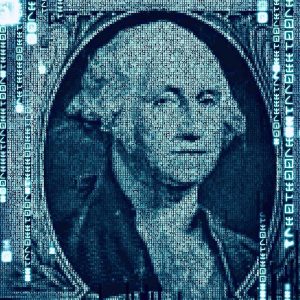 The US Federal Reserve is poised to publish a report on the possibility of a central bank digital currency or CBDC. The concept has been bandied about by central bankers for several years now as policymakers seek to assess the benefits, and potential pitfalls, of a CBDC.
The US Federal Reserve is poised to publish a report on the possibility of a central bank digital currency or CBDC. The concept has been bandied about by central bankers for several years now as policymakers seek to assess the benefits, and potential pitfalls, of a CBDC.
Chairman of the Federal Reserve Jerome Powell has publicly addressed CBDCs frequently stating their intent to research what could become a digital currency utilizing distributed ledger technology. Meanwhile, other jurisdictions are doing the same.
China is already testing a digital yuan live and in the wild as it seeks to top the dollar as the most popular reserve currency. Although China’s CBDC is only partially based on blockchain tech, according to several reports, it could speed up transfers and payments creating value for consumers.
On the flipside are profound privacy concerns. While central banks control monetary policy they do not have deep insight into individual activity payments and transfers activity. A CBDC could alter this. Simultaneously, many questions remain as to the impact a CBDC will have on retail banks and monetary policy in general. For retail banks, a digital dollar may remove the need to hold funds within the commercial banking system upending the entire business model.
The report by WSJ.com claims that Fed officials are divided on the concept. And there is no intent to issue a digital dollar any time soon.
Meanwhile, stablecoin issuers are touting their ability to offer low friction and low-cost payments and transfers without the government getting involved.
A recent interview with Circle, a top stablecoin provider, described their digital currency more like an update to existing payments rails that are in need of improvement. Circle Chief Strategy Officer Dante Disparte told CI that lost in the discussion is the fact that most value-added money in circulation today already rides on private or consortium-led rails.
“Moreover, when properly designed and regulated, privately issued dollar digital currencies do not undermine any of the central tenets of the financial system, including the presumption of financial privacy, economic soundness (in terms of prudential asset management), and the availability of a widely used means of payment, unit of account, and store of value on the internet.”
The Federal Reserve is well aware of the benefits of a speedier payments system. FedNow, a project by the Fed, has been researching the demand for faster payments. A recent survey by the Fed indicated that during the COVID-19 pandemic, three of every four businesses considered it important to offer faster payments. And nine in 10 businesses expect to be able to make and receive faster payments within three years – including instant payments.
Shonda Clay, the Federal Reserve’s chief of customer and industry engagement, explains:
“Businesses’ appetite for faster payments has clearly accelerated due to growing acceptance of digital commerce during the pandemic. Businesses are calling for consumer-to-business and business-to-business payments that facilitate quicker access to funds, the ability to post payments immediately and automatically, and timely notification of payments. Our survey of businesses was designed to uncover insights to help us as an industry deliver instant payment services that meet end user needs.”

